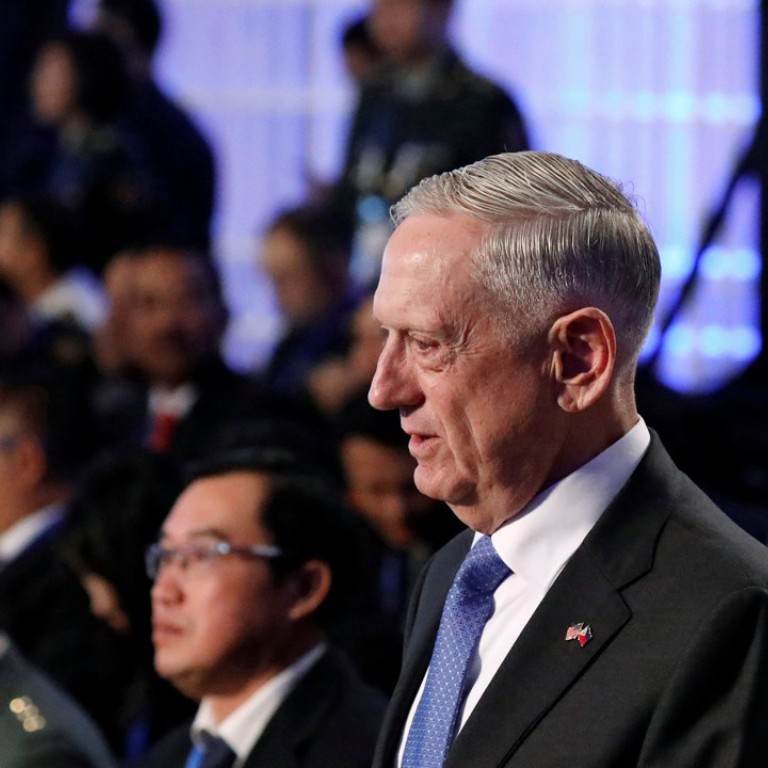
US defence chief Jim Mattis lands in Seoul for talks with ally on nuclear threats from North Korea
Pentagon boss Jim Mattis arrived in South Korea on Friday to meet with the nation’s top defence officials and American military commanders on the front line in countering North Korea’s nuclear weapons programme.
Mattis is emphasising the Trump administration’s push for a diplomatic solution to the problem. But he also has said the US is prepared to take military action if the North does not halt its development of missiles that could strike the entirety of the United States, potentially with a nuclear warhead.
Making his second trip as defence secretary to the US ally, Mattis will meet with South Korean officials as part of an annual consultation on defence issues on the Korean peninsula. He will be joined in Seoul by the chairman of the US Joint Chiefs of Staff, General Joseph Dunford. President Donald Trump is expected to visit the city next month.
Trump entered office declaring his commitment to solving the North Korea problem, asserting that he would succeed where his predecessors had failed. His administration has sought to increase pressure on Pyongyang through UN Security Council sanctions and other diplomatic efforts, but the North has not budged from its goal of building a full-fledged nuclear arsenal, including missiles capable of striking the US mainland.
If Trump sticks to his pledge to stop the North from being able to threaten the US with a nuclear attack, something will have to give – either a negotiated tempering of the North’s ambitions or a US acceptance of the North as a nuclear power.
The other alternative would be US military action to attempt to neutralise or eliminate the North’s nuclear assets – a move fraught with risk for South Korea, Japan and the US.
Michael Swaine, an Asia defence analyst at the Carnegie Endowment for International Peace, sees little chance the North will cave in to international pressure and give up its nuclear weapons.
“I just think the United States is far away from coming to grips with this problem in North Korea,” Swaine said in an interview last week.
The US has about 28,500 troops based in South Korea and has maintained a military presence there since the Korean war ended in 1953.
Mattis met with South Korean Defence Minister Song Young-moo earlier this week when the two attended a conference of Southeast Asian defence chiefs in the Philippines. Song told reporters there that going to war with the North must be viewed as a last resort.
In the Philippines, the 10-nation Association of Southeast Asian Nations (Asean) declared their “grave concerns” over growing tensions on the Korean peninsula. They cited North Korea’s testing and launching of intercontinental-range ballistic missiles as well as its September test of a nuclear device the North claimed was a hydrogen bomb.
Mattis pointed to the Asean ministers’ statement as evidence of a consensus in Asia that North Korea is isolated and in violation of international norms.
US government officials for decades have confidently but mistakenly predicted the approaching collapse of North Korea.
Twenty years ago, Mattis’s predecessor five times removed, William Cohen, said as he peered into North Korea from inside the demilitarised zone at the two Koreas’ border that Pyongyang’s communist system was “decaying and dying.” His view was widely shared in Washington.
Like others, Cohen underestimated the resilience of North Korea’s ruling dynasty that started with Kim Il-sung. Kim Jong-un, the current ruler, assumed control of the country soon after his father, Kim Jong-il, died in 2011, and has accelerated the country’s nuclear and missile programmes.

